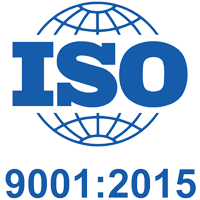Gastrointestinal Cancer Surgery
Cancerous cells in the lining of the stomach is called gastric cancer. The most common type of gastric cancer is adenocarcinoma. Other less common types of gastric cancers include:
Lymphoma.
Gastrointestinal stromal tumor (GIST).
Carcinoid tumor.
Squamous cell carcinoma.
Small cell carcinoma.
Total gastrectomy:
This operation is done if the cancer has spread throughout the stomach. It is also often advised if the cancer is in the upper part of the stomach, near the esophagus. Most subtotal and total gastrectomies are done through a large incision (cut) in the skin of the abdomen. The usual operation for cancer of the upper stomach, called the cardia, is an incision that involves entering both the abdomen and the chest. An alternative approach is a single incision in the abdomen with an incision through the diaphragm (transhiatal approach). The transhiatal approach for total gastrectomy for cancer of the upper stomach is a safe alternative to the standard thoracoabdominal technique and avoids entering the chest and the associated complications. The surgeon removes the entire stomach, nearby lymph nodes, and omentum, and may remove the spleen and parts of the esophagus, intestines, pancreas, or other nearby organs. The end of the esophagus is then attached to part of the small intestine. This allows food to move down the intestinal tract. But people who have had their stomach removed can only eat a small amount of food at a time.
Feeding tube placement:
A feeding tube can be placed into the intestine at the time of gastrectomy. The end of this tube, called a jejunostomy tube or J tube, remains outside of the skin on the abdomen. Through this, liquid nutrition can be put directly into the intestine to help prevent and treat malnutrition.
Other surgeries:
Gastrojejunostomy (Gastric Bypass) :
Tumors in the lower part of the stomach may eventually grow large enough to block food from leaving the stomach. For people healthy enough for surgery, one option to help prevent or treat this is to bypass the lower part of the stomach. This is done by attaching part of the small intestine (the jejunum) to the upper part of the stomach, which allows food to leave the stomach through the new connection.
Endoscopic tumor ablation (endoluminal laser) :
In some cases, such as in people who are not healthy enough for surgery, an endoscope (a long, flexible tube passed down the throat) can be used to guide a laser beam to vaporize parts of the tumor. This can be done to stop bleeding or help relieve a blockage without surgery. Uses an endoscope with a laser to ablate or kill the cancerous tumor in cases of bleeding or a tumor blocking the area.
Placement of a stent :
Another option to keep a tumor from blocking the opening at the beginning or end of the stomach is to use an endoscope to place a stent (a hollow metal tube) in the opening. This helps keep it open and allows food to pass through it. For tumors in the upper (proximal) stomach, the stent is placed where the esophagus and stomach meet. For tumors in the lower (distal) part of the stomach, the stent is placed at the junction of the stomach and the small intestine.
Quick links
- Emergency Services
- International Patient Services
- Corporate Tie-Up
- TPA & Cashless Facilities
- Find a Doctor




















